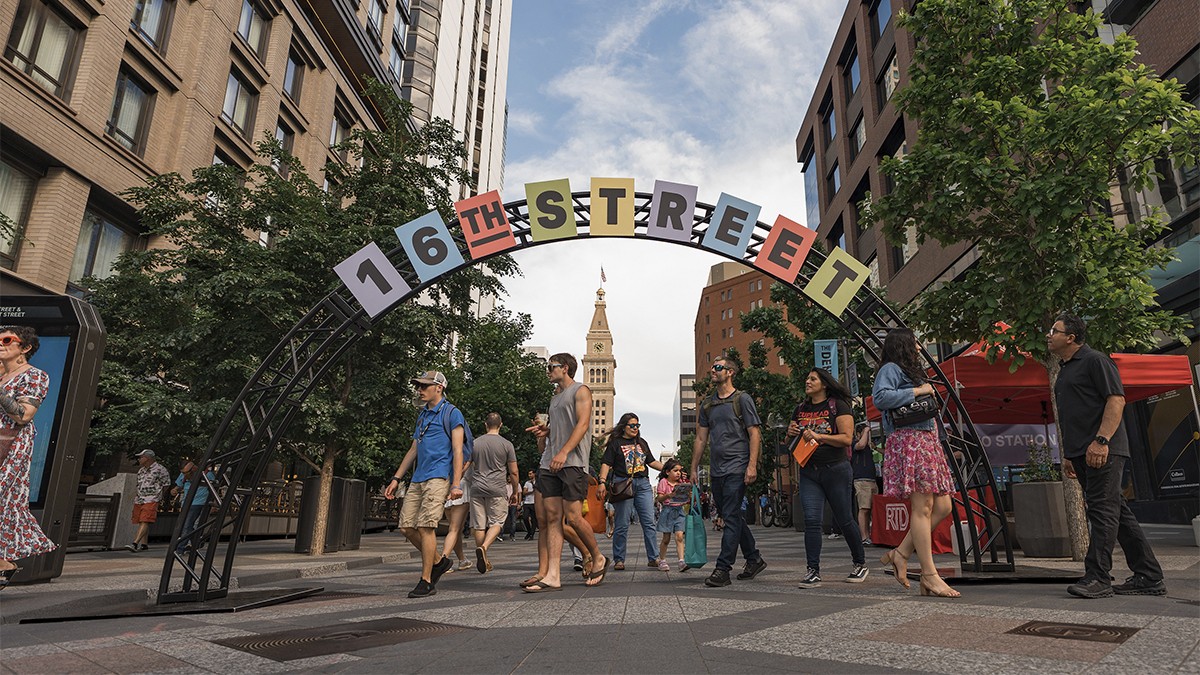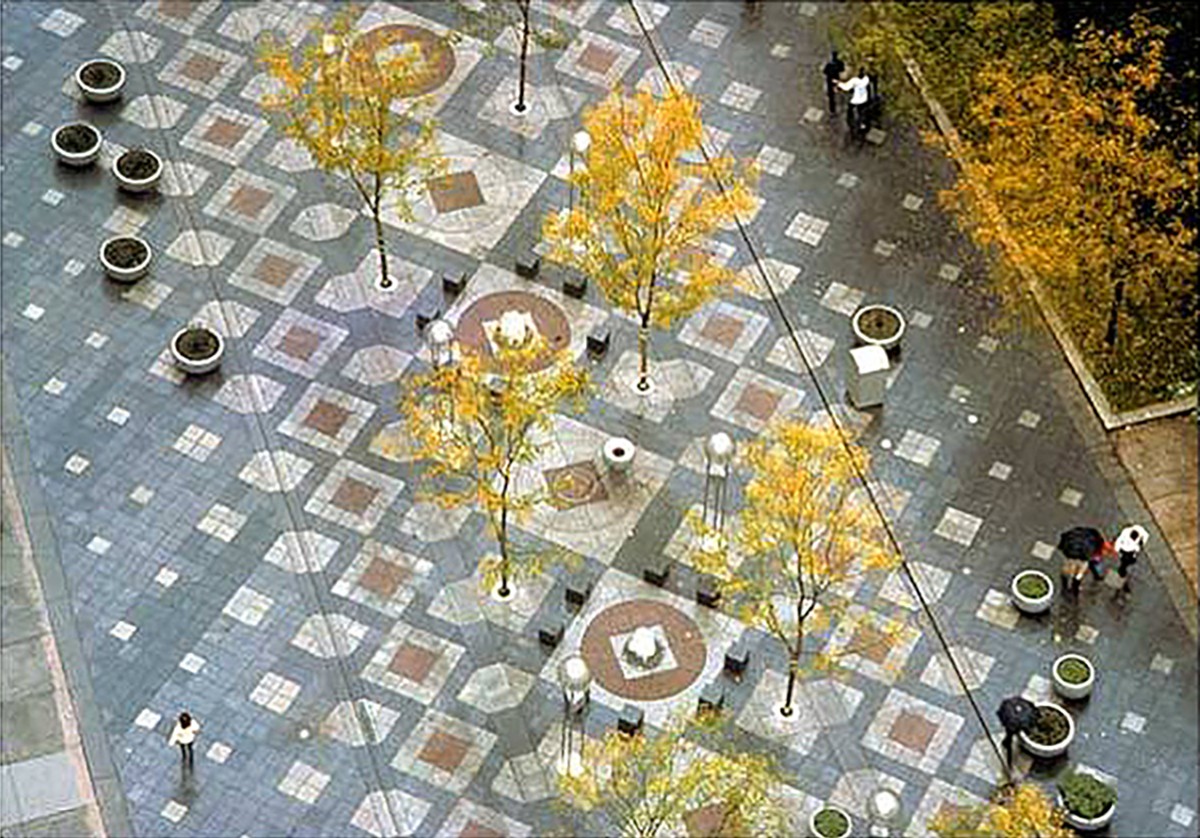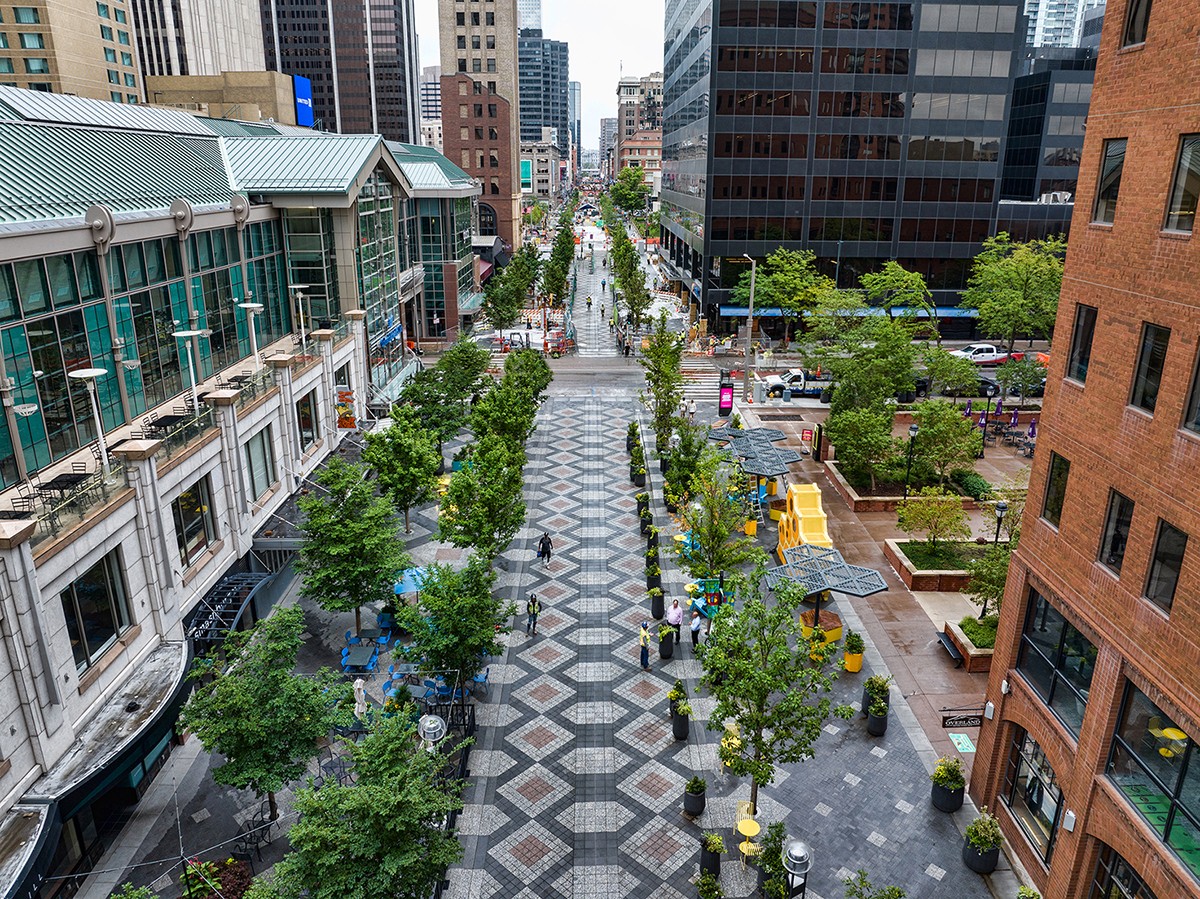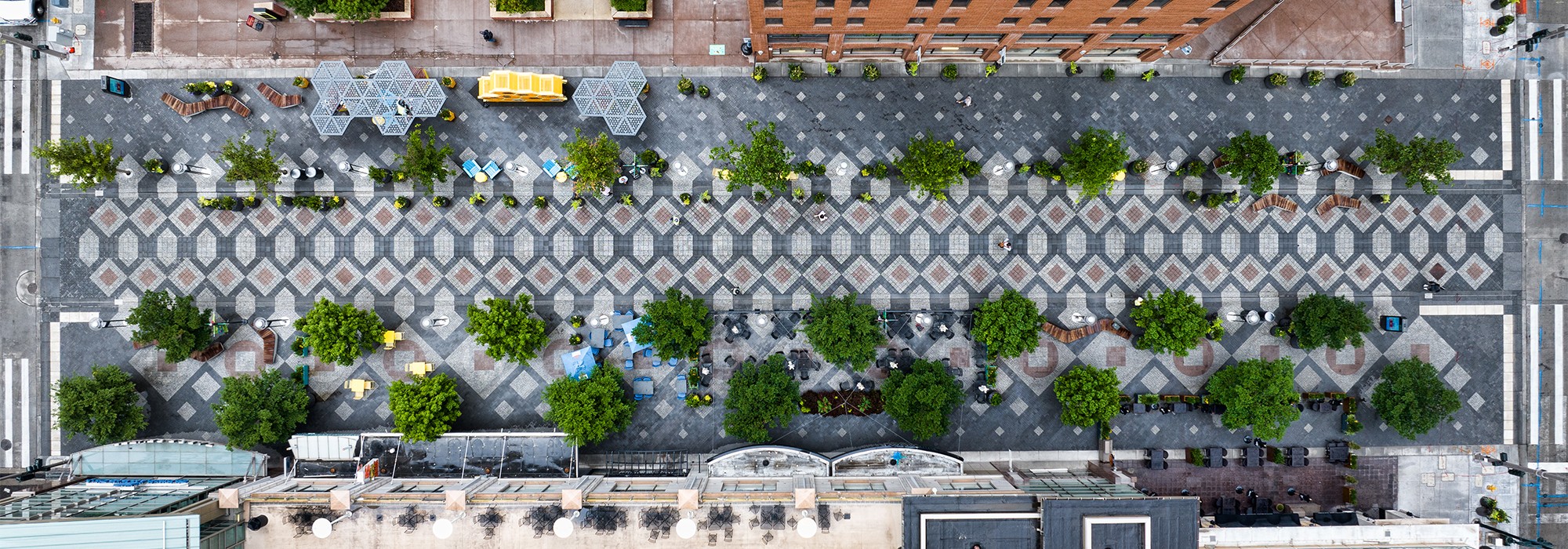Landslide Update: 16th Street Mall, Denver
On October 4, 2025, 16th Street Mall (now simply 16th Street) in Denver, Colorado, was officially reopened to the public following a lengthy rehabilitation. One mile long, 80 feet wide, and spanning thirteen blocks, the pedestrian and transit mall was initially designed in the 1980s by architecture firm I.M. Pei and Partners (now Pei Cobb Freed & Partners) in collaboration with Hanna/Olin (now OLIN).

The mall was developed to facilitate public transportation to and from both downtown and outlying areas, while consolidating and revitalizing the diverse urban core of the city. Since Denver’s earliest days, 16th Street was a hub for commercial development and served as the main parade route for civic celebrations. In 1971 Downtown Denver Inc. (now Downtown Denver Partnership) proposed closing nine blocks to vehicular traffic; however, the idea was met with resistance. Several years later the recommendation was revived. Construction began in 1980 and the mall opened two years later. The design for the 80-foot wide, mile-long mall incorporated intricately designed custom diamond-pattern paving, a centralized corridor of plantings, and street furniture. Lofts, restaurants, shops, and theaters lined the dynamic space, which included a gracious 22-foot-wide, tree-lined promenade flanked on both sides by subtly recessed transit lanes and wide sidewalks.

The mall became a major economic and cultural catalyst for the transformation of downtown Denver, but after several decades, extensive pedestrian and vehicular traffic had taken a toll on the landscape. In 2008 the city began efforts to revitalize 16th Street Mall, as outlined in a report the following year by Matrix Design Group and EDAW/AECOM.
The Cultural Landscape Foundation (TCLF) in 2009 enrolled 16th Street Mall in its Landslide program of at-risk landscapes as part of that year’s Landslide series: Shaping the American Landscape. TCLF highlighted the site because some of the proposed changes threatened to damage the historic integrity of the landscape, including the replacement of custom streetlights and diamond-patterned paving, and also widening the sidewalks. TCLF encouraged Denver citizens to become involved in the decision-making process by contacting their city representatives and engaging the preservation and design communities to ensure that the integrity of the original design remained intact.
Sixteen years later, the $172 million rehabilitation of this iconic landscape, created and implemented by landscape architecture, planning, and urban design firm Dig Studio, has finally been completed. In addition to a rebrand which shortened the name from “16th Street Mall” back to its historic name, “16th Street,” several elements of the mall have undergone significant updates.
The spatial arrangement of the pedestrian and transit corridors has been reorganized to place a stronger emphasis on the pedestrian experience. The central, tree-lined promenade was converted into a transit lane, and the former transit lanes were absorbed into the flanking sidewalks, creating two wide walkways that accommodate outdoor dining and gathering spaces.

This transformation required the removal of the original, diamond-patterned carpet of pavers and the monoculture planting of honey locust trees that once lined the promenade. A new, suspended paving system was implemented, which better supports water drainage and creates more space for trees to spread their roots and grow larger canopies to shade the walkways. The original trees were replaced by 220 mature trees representing a mixed-species palette that included honey locust, elm, oak, and maple, that taken together, form a green corridor along the mile-long mall.

Despite these significant changes, the design created by I.M. Pei and Partners and Hanna/Olin has largely been honored. Original light fixtures, exclusive to the Mall, were preserved and upgraded, and although the original carpet of charcoal gray, light gray, and Colorado red pavers were removed, their character-defining pattern was honored with the replacement granite pavers that successfully replicated the iconic, diamond-patterned design.
The project was not officially completed until October 2025, but sections of the mall began to reopen gradually earlier in the year and are already showing evidence of an increase in daily visitorship. Honoring the original design intent while strengthening the landscape and adapting to today’s needs for an enhanced public realm, the successful rehabilitation has revitalized what many consider the heart of Denver’s downtown.








